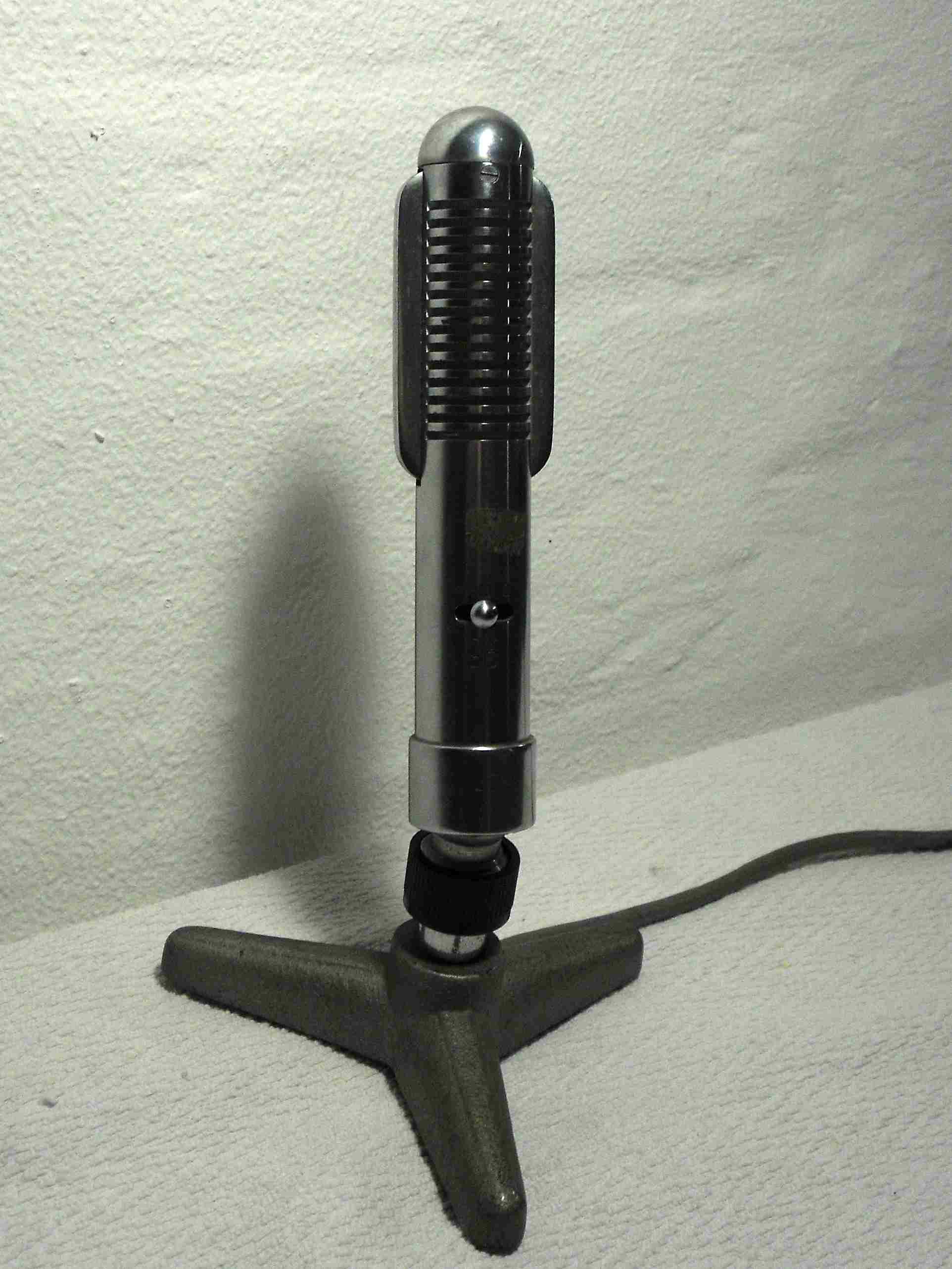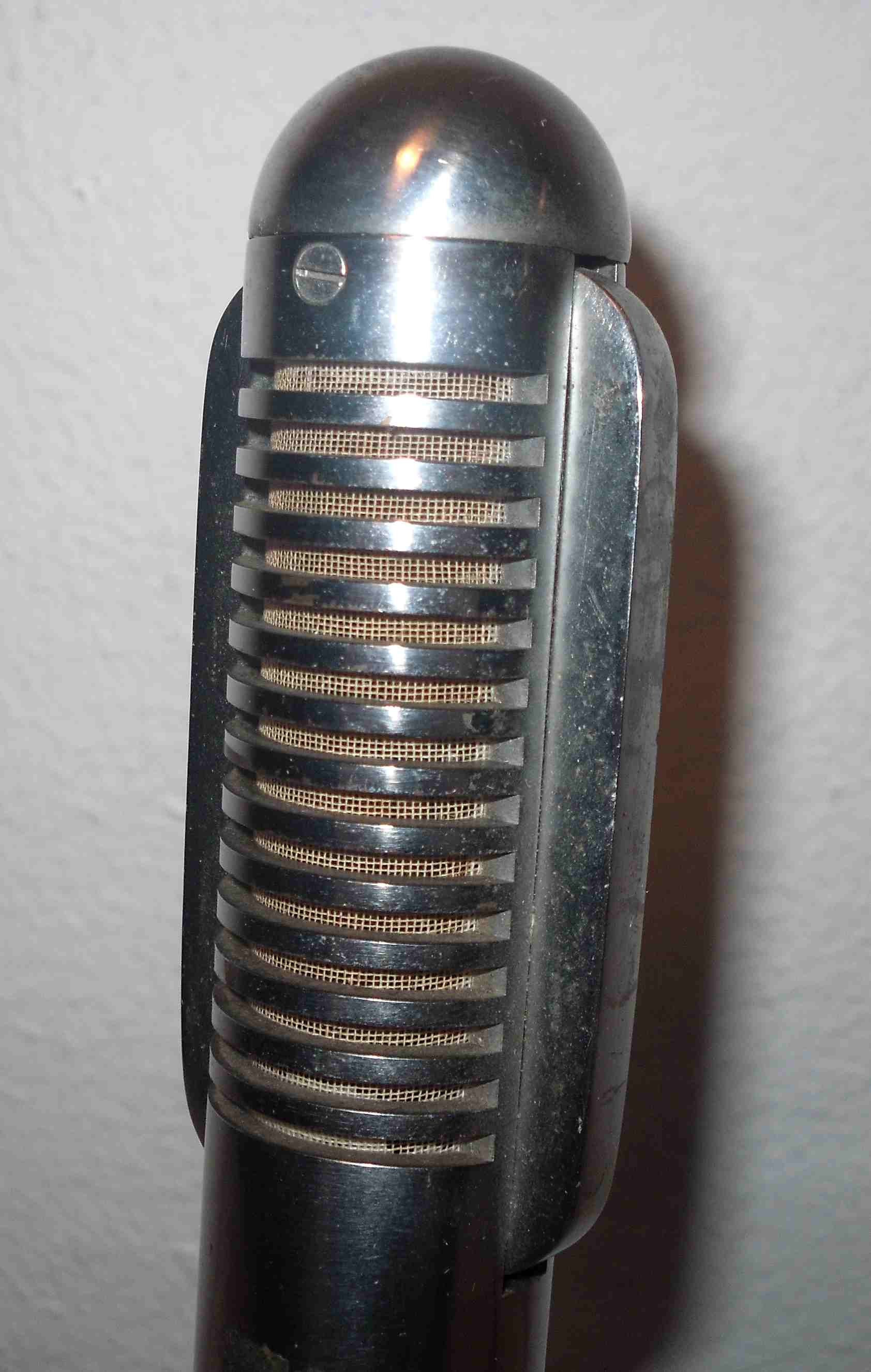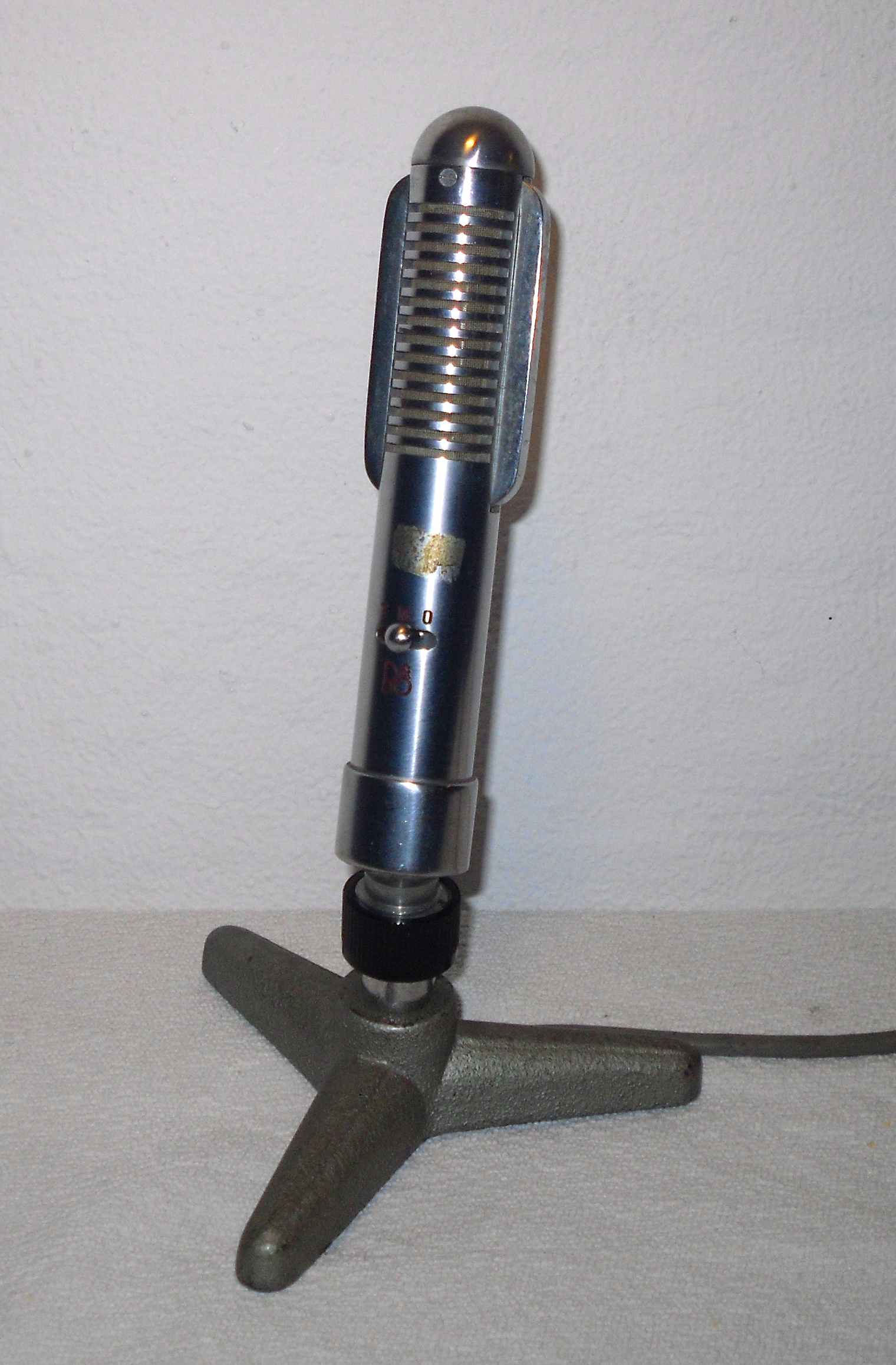





| Manfactured: | 1955 - 1966 |
| Designer: | Erik Rørbæk Madsen |
| Features: | No resonance peaks. Extremely smooth response. Bi-Directional - no side pickup. No frequency discrimination, front to back. High efficiency Nu-Metal transformer placed in microphone housing. Switch for muting and voice/music conditions. The miniature non-corrosive duraluminium ribbon was only 0.0001 inch thick and its weight only 1.3 mg. This negligible mass prevented any resonance within the audio range. Shock and blast proof. Ball swivel for tilting to any position. |
| Specifications: | Dimensions 195mm high, 30mm diameter Impedance 50 ohms balanced Response M position: 20-11000 c/s +/- 2,5 dB T position: 10 dB lower at 100 c/s Sensitivity M position, 50 ohms: 88 dB below 1V/µbar T position: 4 dB lower |
| Response Frequency Characteristic: |
M (Music) Position: From 20 till 11,000 c/s +/- 3 dB T (Close Talk) Position (8-16 inches) Rolled off below 100 c/s: 12 dB RTMA Microphone Rating GM (sensitivity): -158dB; Hum Sensitivity (RTMA) GH: -145 dB. RTMA Standard SE - 105. BM 3. Open Circuit Voltage Level: -88 dB, OdB = 1 Volt per Microbar |
| Output Impedance: | Nominal 80 ohms |
| Rating Impedance: | 150 ohms |
|
Bang & Olufsen Beomic 3 (150 ohms) and Beomic 4 (multi- impedance) models were pressure-gradient full-bass microphones with a perfect figure-eight directional pattern. |
|


